top of page
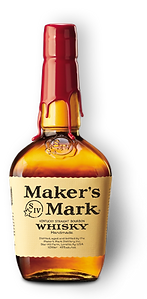
TELLING STORIES...
72%
advertising recall
+41%
brand recall
+89%
increase in Ambassador memberships
increase in case depletion
+29%
67%
of all 3-year goals met within 6 months






1/3
Click the image above for a few examples of historic
Maker's Mark ads.
SEEING RED
The landscape in the bourbon category was changing radically.
"Small batch" had become the rage, and distillers had flooded the market accordingly - everything from large brand spin-offs such as Knob Creek (Beam), Woodford Reserve (Brown-Forman), and Basil Hayden (Beam) to original's like Blanton's and Buffalo Trace. As expected, most of these small batch brands followed traditional whiskey hierarchy, and featured fancy pewter-topped bottles, wood box packaging, antiqued labeling - clearly defining themselves as reserved, exclusive, and...well...pretty arrogant.
Enter Maker's Mark, an original decades-old small batch that had consistently produced bourbon with a fun and irreverent spin. In fact, since the brand's inception, Maker's had used its trademark red wax as the brand's calling card. But, with so many new and emerging bourbon drinkers clamoring to a category that was being defined by the exclusivity of the big brand spin-offs, the once clever, pithy, and fun, "red wax" brand now risked coming across as trite, gimmicky, and immature.
The brand management team had identified a new positioning for the brand that they felt was a strong and defensible: "Premium, yet unpretentious." But how do we bring that to life? How could we convey that new direction without (A) falling into that same sea of arrogant exclusivity or (B) losing our authenticity?
This effort, we explained to the brand management team, wouldn't just require a different direction for Maker's Mark, but a completely different approach to brand development.
LET THE IMMERSION BEGIN...
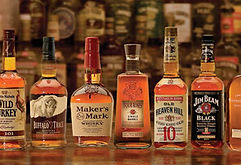
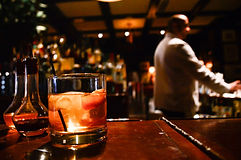
9
weeks
markets
14
bars
28
33
liquor stores
bourbon drinkers
1,100+
Learning from the data: We started with secondary research first, learning a ton from the definitive data source at the time, the Adams Guide - Distribution numbers, drinker profiles, and statistical insights from across the spectrum of brown spirits. Next, we wanted to dive into primary research to build a 3D understanding of the bourbon drinker. However...
Getting beyond the brand: A problem we face in marketing an advertising is that we often seem to put the brand first. That is, we egotistically seek to understand how the consumer fits into our brand story...or devoid of any originality, we seek to understand how our brand fits into the broader landscape of the category. As much as we prattle on and on about putting them first, the consumer actually ends up getting lost in the shuffle.
Seeing the bigger picture: That conventional approach simply didn't work for me. Regardless of what brands they choose, I wanted to dig deep to understand the true DNA of the category. Moreover, I wanted to understand...
-
What draws this drinker to the category...and what keeps them here?
-
What does choosing the bourbon category say about them?
-
How do they see themselves, as well as other bourbon drinkers.?
-
What does not choosing this category say about non-bourbon drinkers?
Boots on the ground: While I had originally developed the "Bar Nights" approach for the agency's tobacco clients, it was also ideal for the spirits category...and especially for this particular business problem. Together with my research partner and boss, Jim White, we traveled to markets all across the country, narrowing in on bars and package stores that - according to distributors - moved a lot of brown spirits (in other words, target rich environments). We were also accompanied by supportive and dynamic account leaders like Todd Spencer and Michelle Heffernan, who were also learning in real-time.
-
By day, we intercepted shoppers in liquor stores. We took them through short surveys, personal interviews, shop-alongs, and brand perceptual mapping.
-
By night, we would visit 'brown spirits bars,' park ourselves in a dark corner, and identify/recruit patrons to join us. In exchange for drinks, food, and cash, our participants would take short surveys, rate and rank brands, engage in perceptual mapping, conduct image tears (selections), and perform a host of other research activities.
Day after day, night after night, we built a more and more detailed POV of the category, the brands, and the modern / emerging bourbon drinker.
By the time we had finished, we had a very clear idea of where we were...and where we needed to go.
Understanding the 'Arrival' Audience...
Emerging from the Adams Guide and the research was an early-to-mid-thirties bourbon consumer who was in the process of 'arriving.' Well into his career. A couple of promotions under his belt. A better car. A nicer home. A burgeoning family. Having accomplished all of this, he was now asking himself, 'With all that's evolving in my life and with how far I've come, why am I still choosing the same brands from my binge-drinking youth?'
Okay...so, small batch was the way to go, but the small batch category had been overrun by a plethora of labels that were simply expensive extensions of mass market brands. Indeed, our research confirmed: Instead of intentionally choosing, a large majority of our bourbon drinkers had more or less "settled" for their current small batch brand!
Instead, our 'arriving' bourbon drinker really wanted a unique brand that reflected how he saw himself. Premium, but unpretentious. Individual. Confident. Down-to-earth. Crystal clear. Strong and confident. A brand that reflected his achievement...his ascent...his arrival...his own maturity, with newer (yet truly classic) definitions of being a gentlemen: Poised, assured, reliable, solid, and trustworthy.
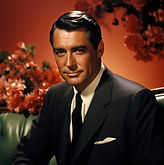
"When the bourbon comes out, things get serious."
At the center of this experience we uncovered three powerful elements: Occasions, Relationships, and Conversations. Research participants quickly and clearly distinguished the vast difference between beer, wine, and white spirits occasions (which tended to be light, informal, and more superficial) and the hallmarks of a bourbon Occasion (deeper, more meaningful, more intimate). This, then, fostered Conversations that were equally and uniquely meaningful. These facets of bourbon, in turn, were elements that both built and reinforced deep and long-lasting Relationships.
All three of these absolutely shape the consumer's self-perception and shape his choice of brands. All three had actually evolved with the consumer and were continuing to evolve.
But, what really blew my mind...
Finding an insight this powerful was like finding diamonds just laying on a busy sidewalk. I mean, our competitors must have seen this, too, right? How could you miss it? But, as I looked around the category, all I saw were brands obsessed with talking about themselves...or trying to creatively shout over other competitors. As a result, they had completely lost touch with the core connective tissue of the category.
Once again..the consumer had found himself playing second fiddle to the brand story.


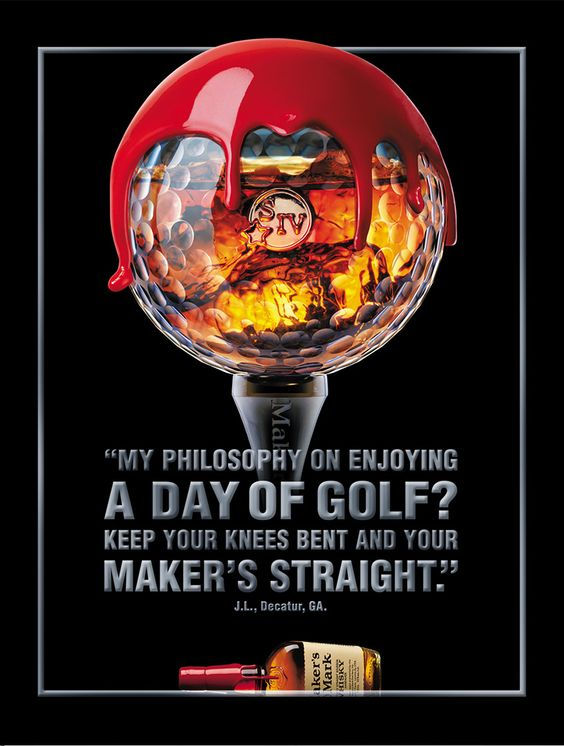



1/10
THE BRAND CATALYST: "STORIES"
What an opportunity! To own the very core attributes of the category. To embody the very reasons someone chooses bourbon as their beverage. It was unique, defensible, and motivating. Most of all, this would present a first-mover advantage for the brand.
The ultimate campaign, created from our 'jump ball' process distilled those stories and leveraged Occasions, Relationships, and Conversations, but the campaign also employed key design and color schemes we had identified in our research.
Tapping into the amazing direct marketing leadership of Ray Radford, and thanks to collaboration across departments, we also used the small-but-growing Maker's Mark Ambassador program to invite our fans to share their stories. What we got back was pure gold. Most every story revealed how bourbon's unique occasions fueled conversations and reinforced those relationships.
MAKING THE CONNECTION
Occasions, Relationships, and Conversations was more than a messaging framework - it was our strategic infrastructure. We looked less and less for party-themed brand activation and instead turned to more serious activities that were defined by and/or helped to expand and deepen relationships and conversations.
With the Ambassador program, we not only invited consumers to experience the brand more deeply, but we also leveraged their relationships (and pushed our exclusivity) by encouraging consumers to "nominate" someone for membership. At one point, working with our fantastic interactive leader Kirk Hilbrecht, we created a meta-data-driven relationship map, that guided who we approached and how - and which relationships yielded the greatest productivity.
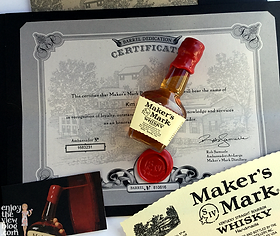
PERFORMANCE
By the end of the initial media period...
-
Advertising recall reached 72%
-
Brand recall increased by +41%
-
Ambassador memberships increased by more than +89%
-
Case depletions grew by +29%
-
Ultimately, the Maker's Mark team surpassed 67% of our total 3-year goals, all within the first 180 days - results that garnered the team a 2002-2003 North American Effie Award for superior marketplace performance
POST-SCRIPT: IMITATION - THE MOST SINCERE FORM OF FLATTERY
As droves of 'arrival' drinkers flocked to Maker's Mark, large production bourbons were desperate to defend their market share. The following year - in what seemed to be a copycat effort - mass bourbon brand Jim Beam launched their "Real Friends. Real Bourbon" ad campaign, trying to leverage their own version of "Occasions, Relationships, and Conversations."
Click on the image (right), take a look at the ads, and see what you think:
-
Does this reflect the seriousness of our 'arrival' audience?
-
Are they getting away from a 'binge-drinking' reputation?
-
Or is this campaign simply a throwback to drunken frat boys behaving badly?
Of course, if you can't beat 'em...buy 'em. Maker's Mark would be purchased by Beam's holding company less than five years later.




1/7
bottom of page